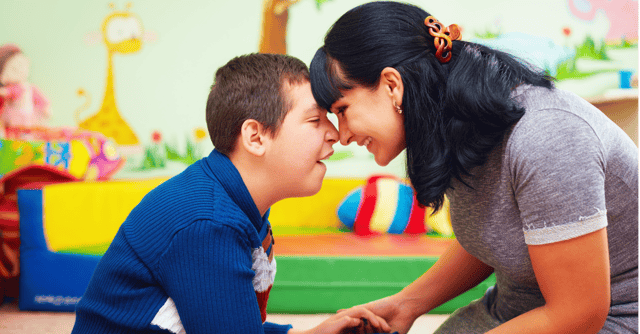
Jan 12, 2018What Types of Outcome Measures In Cerebral Palsy Do We Have?

Back to Blog Overview
There are several outcome measures available for children with cerebral palsy (CP) used within research and clinical practice. However, with so many different alternatives, it’s difficult to know which one is most appropriate to use, and when.
Here, we’ll be looking at some of the different outcome measures out there, and how they can help you assess children with CP.

1. GMFM
Gross Motor Function Measure (GMFM) is a tool designed to evaluate the change in gross motor function in children with CP. There are two versions of the tool: the original GMFM-88 and the more recent GMFM-66, which is more suitable for goal setting as it provides more information. According to CanChild, both versions are appropriate for children with motor skills below that of a five-year-old without disabilities.
Before using the tool, you should get familiar with the guidelines, and even better, complete a few practice sessions before using it for clinical assessments. The equipment you need for an assessment is not advanced and can be found in most gyms (examples are mats, benches, toys and access to stairs), and the score sheets used are available for free online.
There’s a software called Gross Motor Ability Estimator (GMAE) that allows you to enter individual item scores and convert them to an interval level total score. This program is free to download from CanChild.
Read also: What is GMFCS, and why is it used?
2. PEDI-CAT
The Pediatric Evaluation of Disability Inventory-Computer Adaptive Test (PEDI-CAT) is an instrument for evaluating functional performance and capability in four domains: daily activities, mobility, social/cognitive and responsibility.
In a clinical setting, it can be used to identify functional delay within specific functions, or to evaluate any improvements made after interventions. It is also a well-used instrument within research to evaluate and monitor a group’s progress.
PEDI-CAT can be used with children and young adults (birth up to 20 years of age) with a variety of physical and/or behavioural conditions.
There are two types of scores calculated in the PEDI-CAT: normative scores and scaled scores. The normative score is based on the child’s chronological age, and makes it possible to interpret a child’s functional level relative to other children at the same age without a disability. Scaled scores provide a way to look at current functional skills and progress in skills over time.
Read also: Pediatric Evaluation of Disability Inventory Computer Adaptive Test (PEDI-CAT)
3. CHQ
The Child Health Questionnaire (CHQ) is a tool used to assess a child’s physical, emotional and social well-being. CHQ measures 14 unique physical and psychosocial concepts, and can be used for children between the age of 5 and 18.
CHQ is available in several versions. Some of the questionnaires are made for parents, others are self-report versions, which can be completed by the children themselves.
What should you use, and when?
These three outcome measures differ in use and suitability. Many factors affect the choice of outcome measures, including the child's age, the type of intervention, but most importantly what your clinical question or research question is. Do you want to evaluate an intervention where the focus has been on gross motor function? Or are you more interested in evaluating the child's ability to participate in self-care? When answering these questions, it helps to be clear on what the purpose of testing or evaluating the child is.
According to Schiariti V et al., (2014), the first two outcome measures, GMFM and PEDI-CAT, cover components of the body function, activity and participation, whilst CHQ also extend to assess emotional and social well-being. Assessing a child with CP can be quite complex, so using a combination of the above tools (or any other you might find to beneficial) will help to give you accurate information that can be used in your goal setting and work.
Read also: What do we know about strength exercise for people with CP?
Other outcome measures you should be aware of
The outcome measures above are only three of several hundred. Other tools you should be aware of and consider to make use of, are:
- Canadian Occupational Performance Measure (COPM)
- Goal Attainment Scaling (GAS)
- Caregiver Priorities and Child Health Index of Life with Disabilities (CPCHILD)
Do you want to know more about CP?
Read our resource page with answers to most of your questions.

Rikke Damkjær Moen brings many years of experience as clinical physiotherapist to the Made for Movement team. Her mission is to ensure that everybody, regardless of mobility problems, should be able to experience the joy and health benefits of physical activity. As our Medical Manager, Rikke is passionate about sharing knowledge so that individuals with special needs, families, and clinicians can discover the possibilities and solutions provided by Made for Movement.


